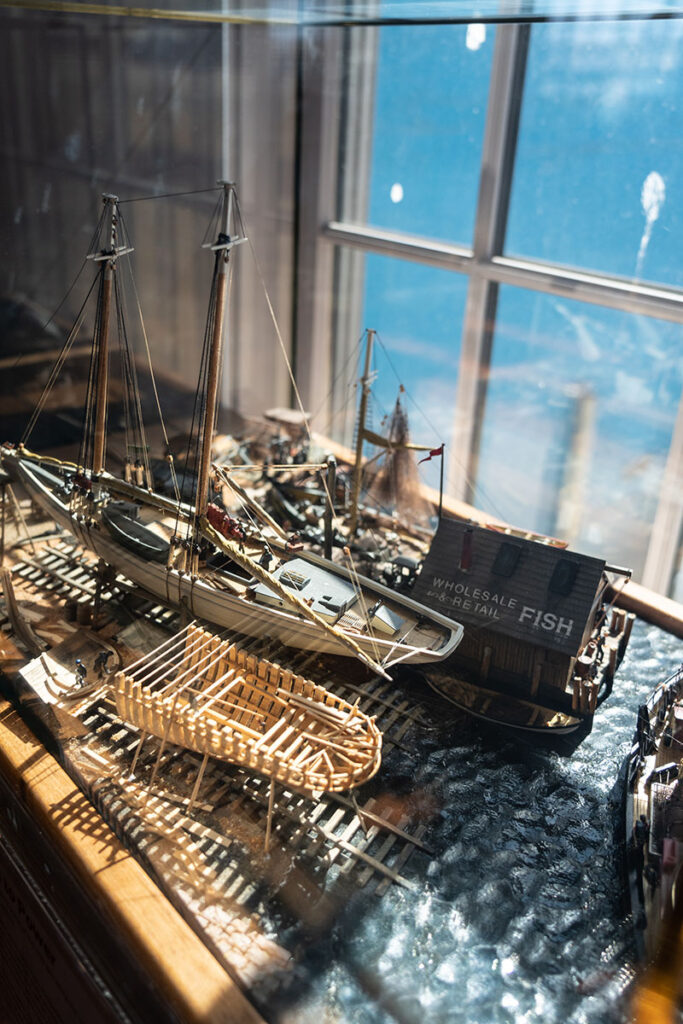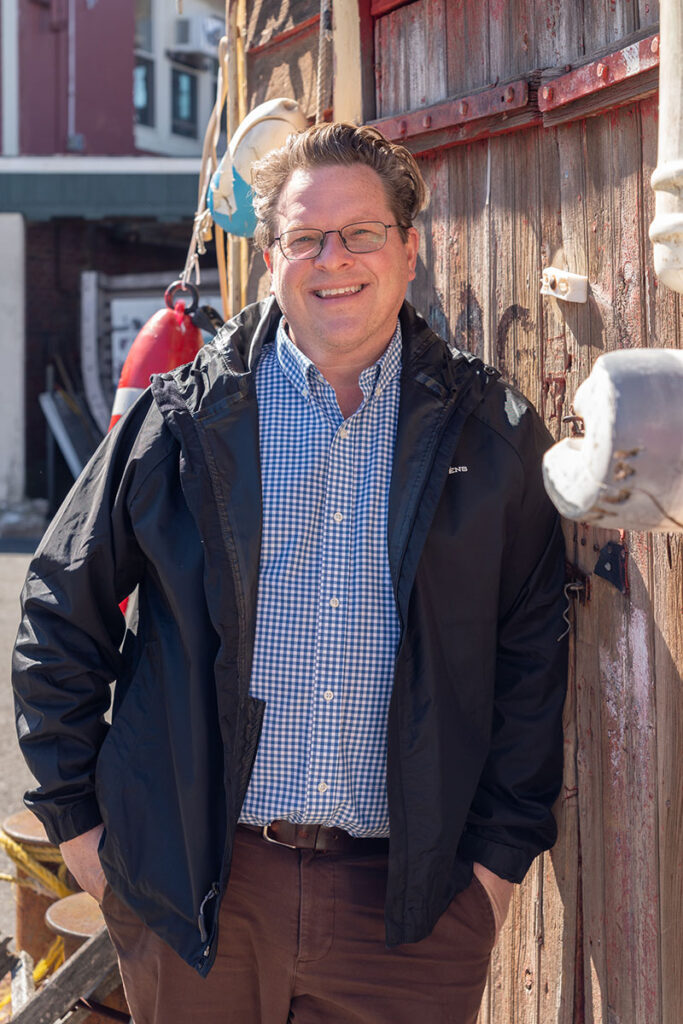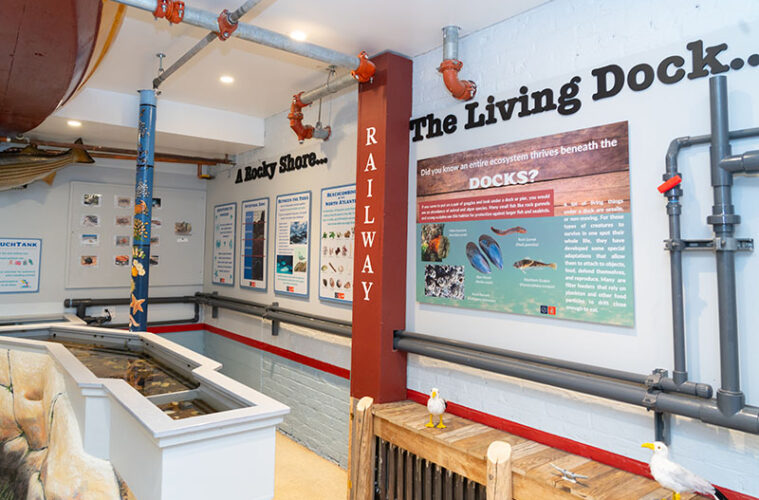Children huddle around a low touch tank, plunging their hands into the frigid, salty water to get a chance to touch or hold a lobster or a huge, otherworldly looking moon snail, while greenish-brown seaweed ripples in the artificial current. In other tanks, cinder blocks and pipes sit among scuttling crabs, and blue mussels cling to the sides of a thick post, where a starfish is tucked at the bottom. A sign on the wall invites visitors to “look up!” to see the underside of a wooden dory with a fishing net attached to the end.


Just feet away, outside in the cold Gloucester Harbor, scenes just like these bloom under the dock beneath the licking waves, and these tanks recreate that hidden ecosystem, a reminder that every inch of Gloucester’s waterfront is teeming with life.
These tanks are only a small part of Maritime Gloucester’s brand-new Maritime Science Education Center, a year-round, indoor science education space dedicated to teaching kids (and adults) about Gloucester’s maritime heritage and its living, working waterfront. It opened in January as Gloucester kicked off its 400th anniversary year and is the first of two planned phases that aim to bring year-round maritime education to the Gloucester community and beyond.

“This is becoming an educational platform for the community and really helping us to capture these kids and inspire them to pursue STEM,” says Michael DeKoster, Maritime Gloucester’s executive director.
For nearly two decades, Maritime Gloucester has worked with Gloucester Public Schools to bring STEM education to students in grades three through five by visiting classrooms and inviting students to the center, which is housed in a site on Gloucester Harbor that was once home to a marine railway and ice house, among other things.
“We did that through the lens of marine science,” says DeKoster. Among investments in the site is an outdoor, seasonally open Sea Pocket Lab with seven aquarium tanks, including touch tanks, that house animals and habitats native to Cape Ann.
“It’s a wonderful attraction,” says DeKoster. “People come from all over to see the North Shore’s only aquarium.”
However, when DeKoster arrived as Maritime Gloucester’s executive director five years ago, he recognized the need for indoor educational space that would allow schoolkids to visit during the winter months, too.

The newly opened center answers that need. “We redesigned our first floor to create this whole Maritime Science Education Center to become a platform for STEM education for the Gloucester Public Schools and beyond,” he says, adding that the center will be working with other local cities and towns to bring in their students, too.
“It opens up a whole new world for field trips to come to us during the off season, for the local kids to have something to do throughout the winter. As a local kid myself, it was always like, what are we going to do on a cruddy, rainy, snowy day? But now we’re very excited for the kids to actually have a place to go,” Kelsey Bradford, director of marine education and aquarium operations, said during a ribbon-cutting ceremony for the new center. “Everything that’s in the space was geared toward the education programs that we have.”
Geoffrey Richon, founder and chair of Maritime Gloucester, agreed, calling the new education center “a major step for us and the community for a broader educational resource at the center of Gloucester’s working waterfront.”

That idea of celebrating the local, working waterfront is central to the exhibits and educational programming at the new Maritime Science Education Center, from the salt marsh and the harbor, to the rocky shore and the “living dock.”
“We teach from a perspective of a cultural sense of place. So, obviously, we talk about our fish, our harbor, our environment. You will not see tropical fish there,” says DeKoster. “We are making a very personal and cultural sense of place and experience for the kids.”
That applies to the STEM focus, too.
“Science, technology, engineering, math, all of those principles happened onboard vessels, all of those principles happened to make Gloucester one of the biggest fishing ports going,” DeKoster says. “That ties into our past, which feeds our cultural heritage.”
However, it’s also important to remember that “heritage” is about the present and future, too: “It’s not just something in the past. It’s a cultural heritage, which means it’s alive today,” DeKoster says. “It’s something that’s developed, and alive, and part of what we are. So we’re creating in these kids a better understanding of their cultural identity, their sense of identity. And that connects them to the town and hopefully propels them into the future.”

